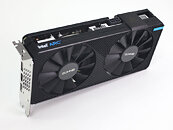LattePanda Team and Global Partners Jointly Launch LattePanda 3 Delta - the Fast and Pocket-sized Single-board Computer
The LattePanda Team launched the world's thinnest pocket-sized hackable computer - LattePanda 3 Delta with global electronic components distributors. The collaboration will ensure that the product choice for LattePanda 3 Delta is passed on to customers through quick, easy online selection via the website of global electronic components distributors and LattePanda.
"LattePanda Team is so proud to cooperate with the global electronic components distributors for this joint launch. It delivers an exciting message to our customers that they can gain fast, easy access to our high-performance and hackable LattePanda 3 Delta anywhere in the world. Our collaboration will assure even higher levels of customer service," said Sandy Zhang, CMO of LattePanda Team.
"LattePanda Team is so proud to cooperate with the global electronic components distributors for this joint launch. It delivers an exciting message to our customers that they can gain fast, easy access to our high-performance and hackable LattePanda 3 Delta anywhere in the world. Our collaboration will assure even higher levels of customer service," said Sandy Zhang, CMO of LattePanda Team.
















































